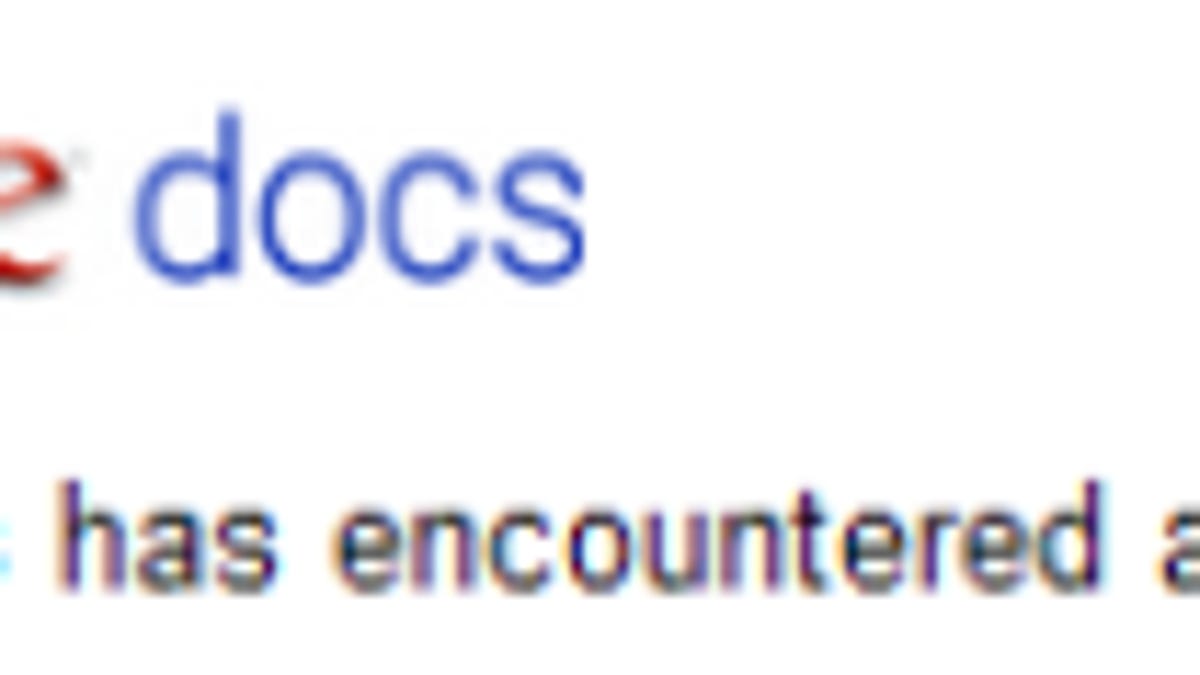Was brief Google Docs outage a tremor or a tsunami?
The world of work is moving to the cloud. But the local computing model still has a lot to offer.

My pronouncement at the end of the short story about the brief Google Docs outage did not go over well. I said, "This is likely to be a major blow to the growth of cloud computing, as it reminds IT managers of the danger of relying on a unified product to serve all a company's users."
As commenters said, and I'm generously paraphrasing, I'm a kook. One little outage may send worrywarts like me running for the safety of Microsoft Word, but work is moving to the cloud, and it's high time, since overall it's a more reliable and more cost effective place to store documents.
Right on all counts. Let's posit that the cloud is a hundred times more reliable and less expensive than a corporate working infrastructure built on local computing power and local storage. Fine. Now let's imagine what failures look like on a fully old-fashioned (local model) system compared with a modern, fully cloud-based one.
On a local architecture, a single computer failure takes one person offline. Or, let's say a company file server fails and there's no hot backup. Now a workgroup is unable to access server-based files. In both cases, the damage is contained, either to a single user or to a workgroup's capability to access some shared files. While maintaining the infrastructure to keep everything running is expensive both in terms of licensing and manpower, the failures are manageable.
But in the case of a Google Apps outage, entire company workforces were unable to access any of their documents during the brief outage today. Yes, it is very true that Google's engineers brought the system back up in fairly short order, probably faster than any understaffed IT department would have been able to react to a similar outage on a local system. And, as far as we can tell, there was no data loss. But if it's your job to worry about a company's productivity, you have to think about a worse case than this--and about not being able to do anything when, say, 10,000 workers are suddenly idled by a single tech outage. Is it worth it?
As I said in a Google+ conversation on this topic, I am a huge believer in the Web and cloud. Cloud services are more reliable and less expensive than their locally-powered alternatives. I'm an extra-strong believer in using the cloud as a backup system for local data and devices, because heterogeneous systems are more able to absorb failures than mono-cultures. It's as true for IT as it is for agriculture.
It's appropriate for local systems to return the favor to the cloud: IT groups, and individuals, can set up local backups (or backups to separate cloud-based systems) for their main cloud services.
Products to do this exist but are not widely used. There's Spanning Backup, for example. As of this week, it backs up both Google documents and e-mails. It's designed to rescue users from their own inadvertent changes of deletions of files, but it could also be used to restore files if Google Docs itself suffered a catastrophic failure.
Google is rolling out its own offline version of Google Docs, which would help mitigate the effects of occasional Docs outages. It's read-only, but a lot better than nothing if you desperately need a document during an outage.
Personally, I prefer using tools that synchronize files across devices and the cloud. The note-taking app I use, Evernote, does just that. I also use SugarSync to keep local files backed up to the cloud and accessible from any of my devices or the Web itself (DropBox performs the identical function).
It's cool that we're moving from an inefficient, expensive, mostly local way of working to a more effective (and far more social) Web-based architecture. But let's not give up our safety nets as we make the leap.

